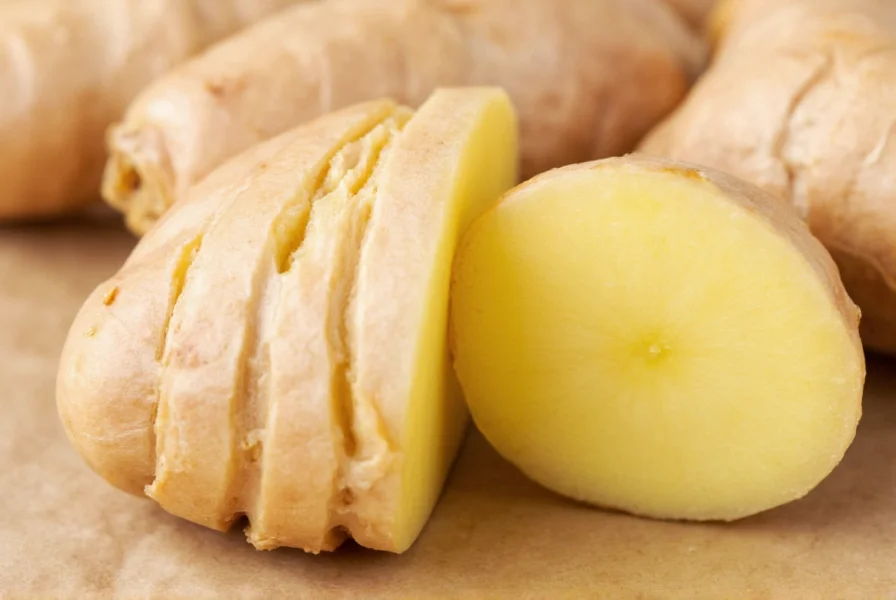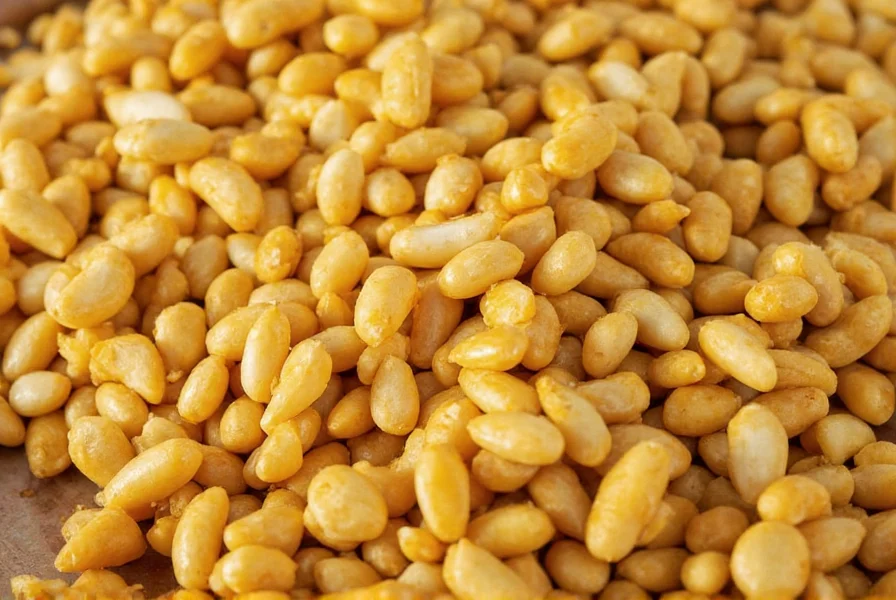Ginger (Zingiber officinale) has been cultivated for over 5,000 years and remains one of the world's most popular culinary and medicinal plants. This tropical perennial herb belongs to the Zingiberaceae family, which also includes turmeric and cardamom. Understanding what ginger food actually is requires examining its botanical nature, culinary applications, and physical characteristics.
Botanical Identity: Rhizome, Not Root
Despite common references to “ginger root,” ginger is technically a rhizome—a modified underground stem that stores nutrients and produces new shoots. This distinction matters because rhizomes grow horizontally beneath the soil surface, unlike true roots that grow vertically downward. The ginger rhizome’s segmented structure with “knobs” or “fingers” is characteristic of its stem origin. When exploring what is ginger used for in cooking, this botanical understanding helps explain its fibrous texture and concentrated flavor compounds.
Physical Characteristics and Flavor Profile
Fresh ginger features:
- Appearance: Tan to light brown skin with a network of wrinkles; pale yellow interior when peeled
- Texture: Firm, fibrous flesh with a moist consistency
- Aroma: Sharp, citrusy, and slightly peppery when raw; becomes warmer and sweeter when cooked
- Taste: Initially pungent and spicy, mellowing to a warm, slightly sweet flavor with subtle lemon undertones

Common Forms of Ginger in Culinary Applications
Chefs and home cooks utilize ginger in various forms, each offering distinct flavor profiles and uses. Understanding these variations answers the practical question of how to use ginger in recipes effectively.
| Form | Characteristics | Best Culinary Uses |
|---|---|---|
| Fresh Ginger | Most vibrant flavor; spicy heat; requires peeling | Stir-fries, marinades, fresh juices, baking |
| Ground Ginger | Milder, warmer flavor; earthy notes | Baking, spice blends, chai tea |
| Candied Ginger | Sweet with intense ginger heat | Desserts, trail mix, tea infusions |
| Ginger Juice | Concentrated flavor; no fiber | Cocktails, dressings, smoothies |
Global Culinary Traditions Featuring Ginger
Ginger’s versatility explains its presence in diverse food cultures worldwide. When considering ginger in Asian cuisine, it serves as a foundational flavor in many dishes:
- East Asia: Essential in Chinese stir-fries, Japanese pickled ginger (gari), Korean kimchi
- Southeast Asia: Key ingredient in Thai curries, Indonesian sambals, Vietnamese pho
- Indian Subcontinent: Central to spice blends like garam masala and chai tea
- Caribbean: Featured in jerk seasoning and ginger beer
- African: Used in Moroccan tagines and West African stews
- Western Cuisine: Popular in gingerbread, cookies, and ginger ale
Selecting and Storing Ginger Properly
Knowing how to store ginger properly significantly extends its usability. When shopping for fresh ginger:
- Choose firm rhizomes with smooth skin (avoid shriveled or moldy pieces)
- Smaller “fingers” often have more concentrated flavor than larger sections
- Refrigerate unpeeled ginger in an airtight container for up to 3 weeks
- Freeze whole or sliced ginger for 6+ months (no need to thaw before use)
- Store peeled ginger in sherry or vodka in the refrigerator for extended freshness
Practical Tips for Cooking with Ginger
For beginners wondering what does ginger taste like in different applications, these techniques help maximize flavor:
- Grating: Use a microplane for fine texture that distributes evenly in sauces and dressings
- Slicing: Cut thin coins for tea infusions or to add to braises (remove before serving)
- Minced: Provides balanced heat distribution in stir-fries and curries
- Infusing: Steep in hot liquids like tea, broth, or syrup to extract flavor without texture
When substituting between forms, remember that 1 tablespoon fresh grated ginger generally equals 1/4 teaspoon ground ginger. This conversion helps when adapting recipes based on what’s available in your pantry.
Understanding Ginger Varieties for Cooking
Not all ginger is the same. Recognizing different types of ginger for cooking helps select the right variety:
- Common Yellow Ginger: Most widely available; balanced heat and flavor
- African Ginger: More fibrous with intense heat; popular in Caribbean cooking
- Jamaican Ginger: Milder flavor; often used in baking and beverages
- Blue Ring Ginger: Rare variety with purple rings; citrusy notes; less fibrous
Frequently Asked Questions
Is ginger a root or stem?
Ginger is botanically a rhizome, which is a type of horizontal underground stem, not a true root. This explains its segmented structure and growth pattern. The confusion arises because it grows underground like roots, but its internal structure and growth characteristics identify it as a modified stem.
What's the difference between fresh and dried ginger?
Fresh ginger has a brighter, more complex flavor with citrus notes and sharper heat, while dried (ground) ginger has a warmer, earthier flavor with less citrus and more concentrated spiciness. Fresh ginger contains gingerol (responsible for heat), which converts to zingerone (sweeter compound) when cooked and to shogaol (more pungent) when dried.
Can you eat ginger skin?
Yes, young ginger skin is thin and edible, especially when using a vegetable peeler or scrubbing brush. However, mature ginger develops thicker, tougher skin that's typically removed for better texture in dishes. Many chefs prefer to peel ginger to ensure consistent flavor distribution in recipes.
Why does my ginger taste bitter?
Ginger can taste bitter when overcooked, especially in acidic environments. The compound shogaol, which forms when ginger is dried or cooked extensively, has a more intense, sometimes bitter quality. To prevent bitterness, add ginger later in the cooking process for fresh applications, or use less when making long-simmered dishes.
How much ginger equals ground ginger in recipes?
Generally, 1 tablespoon of freshly grated ginger equals approximately 1/4 teaspoon of ground ginger. This conversion accounts for the moisture content in fresh ginger and the concentration of flavor compounds in dried form. When substituting, start with less ground ginger and adjust to taste, as its flavor is more intense and less complex than fresh.











 浙公网安备
33010002000092号
浙公网安备
33010002000092号 浙B2-20120091-4
浙B2-20120091-4